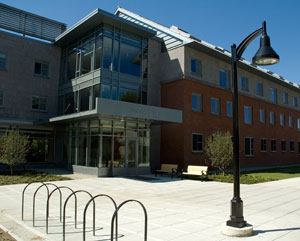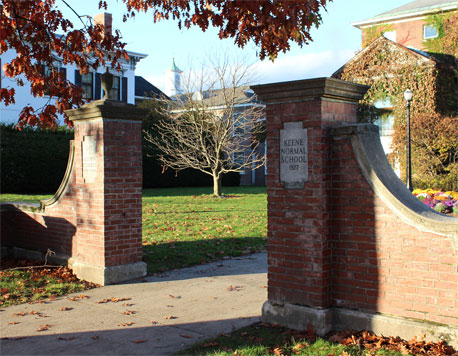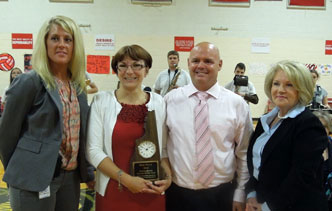
Back In 1969, before he came to Keene State, Professor Emeritus of Geography Klaus Bayr decided to climb the Grossglockner, the highest mountain in his native Austria. He’s been back many times since, and during those visits, he became familiar with the nearby Pasterze Glacier, the largest in the eastern Alps. And during those visits, he became aware that the Pasterze was changing. “The glacier is shrinking—terribly—it’s lost a lot of mass,” Dr. Bayr observed.
The Margaritze Reservoir collects the meltwater of the glacier, and a hydroelectric power station uses that water to produce electricity. So far, the Pasterze is producing plenty of meltwater, “but if the glacier melts away, it will obviously affect power production,” Dr. Bayr observed. He has been working with the National Aeronautics and Space Administration (NASA) since the 1980s to study the glacier’s rate of recession. NASA supplies satellite data and images, and Dr. Bayr has been ground truthing that data—walking the glacier’s perimeter, with GPS in hand, to determine its exact edge. Glaciers push a lot of till in front of them: rocks, dirt, and debris. With sometimes several feet of till on top of the ice, it’s difficult to tell from satellite images just where the glacier ends. Dr. Bayr’s ground truthing supplies that essential data.
Continue reading Climate Change Study Wins NASA Grant











 Early Sprouts, KSC’s award-winning effort to instill healthy nutrition and eating habits in preschool-age children by engaging them in gardening, exploring, and cooking fresh produce, was the subject of a
Early Sprouts, KSC’s award-winning effort to instill healthy nutrition and eating habits in preschool-age children by engaging them in gardening, exploring, and cooking fresh produce, was the subject of a 
 The New England Green Pastures Committee recently awarded
The New England Green Pastures Committee recently awarded 







 Save the date: October 12–14—KSC Homecoming! This year, we’ll be celebrating big all weekend! The new TDS building (the Technology, Design and Safety Center) opened its doors this fall, and , and we’ll be showing off our newest building with open houses and receptions!
Save the date: October 12–14—KSC Homecoming! This year, we’ll be celebrating big all weekend! The new TDS building (the Technology, Design and Safety Center) opened its doors this fall, and , and we’ll be showing off our newest building with open houses and receptions!


